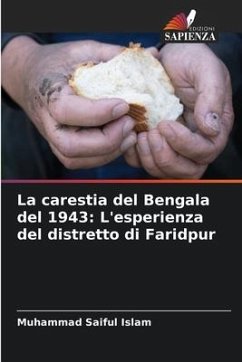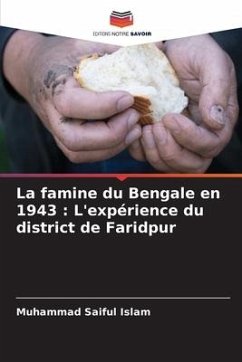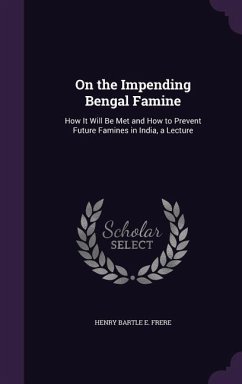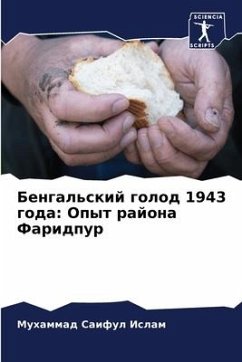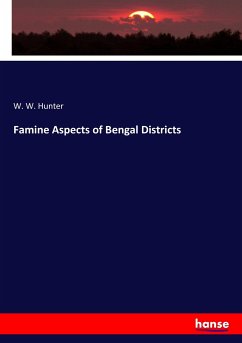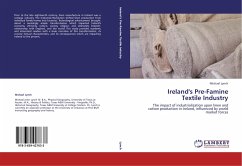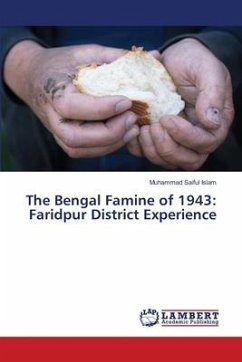
The Bengal Famine of 1943: Faridpur District Experience
Versandkostenfrei!
Versandfertig in 6-10 Tagen
29,99 €
inkl. MwSt.

PAYBACK Punkte
15 °P sammeln!
Research on famine in Bengal always attracts the attention of historians but unfortunately, it has not been studied locally as it should have been. At the peak of World War II, in1943, the then undivided Bengal witnessed a period known as the 'Panchaser Manvanantar', which was extended throughout the years 1943 to 1945. It was administrative disaster in Colonial Bengal which the British government never officially acknowledged. None of the districts of East Bengal could escape its brutal clutches mostly such as Chittagong, Dhaka, Faridpur, Tripura, Noakhali, Bakargonj and so on. Among the affe...
Research on famine in Bengal always attracts the attention of historians but unfortunately, it has not been studied locally as it should have been. At the peak of World War II, in1943, the then undivided Bengal witnessed a period known as the 'Panchaser Manvanantar', which was extended throughout the years 1943 to 1945. It was administrative disaster in Colonial Bengal which the British government never officially acknowledged. None of the districts of East Bengal could escape its brutal clutches mostly such as Chittagong, Dhaka, Faridpur, Tripura, Noakhali, Bakargonj and so on. Among the affected districts of Bengal, Faridpur has been chosen as study area due to severity of famine. This study addresses the famine scenario of Faridpur. Finding of the study shows that the government relief issues, ignorance of warnings, political nepotism and denial policy of British government intensified the famine of Faridpur district. The wartime tactics adopted by the colonial government aggravated the famine situation. This article has shed light on the government war time policy and activity that fueled the famine in Faridpur district.



